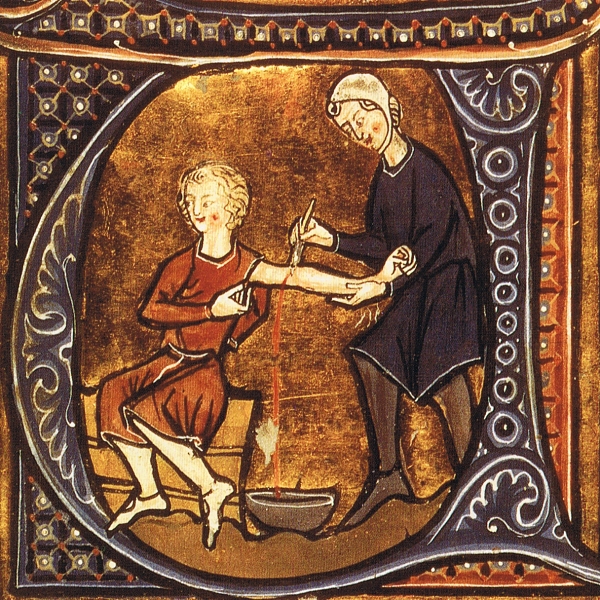Physicians: Physicians were scholars who studied at universities. In order to be declared a physician, a student had to prove himself able to recite, lecture and debate the contents of his studies.
Barber/Surgeons: Surgeons belonged to the working class and did the jobs that were considered beneath physicians, such as bloodletting and pulling teeth. Most surgeries were performed by the barber/surgeon. The most common operations were for hernias, gallstones and Cesarean section.
Monks: During the early medieval centuries it was the monks who copied out manuscripts of the works of Hippocrates and other Greek or Latin medical writers. There is evidence that they practiced the medical knowledge they obtained as scribes. Each monastery had an infirmary for its ailing and aged members. Medical aid would also be provided to the poor, travelers and pilgrims who visited. Some monks gained such a reputation for being skilled healers that they were sought out by lay patients. In some cases the care of such outsiders gave rise to hospitals apart from the monks' infirmaries.
Leeches: Leeches were lay practitioners whose training was more practical than theoretical. Practicing without proper education, they relied more on informal observation and folk medicine. They may have been apprenticed to a barber-surgeon or physician at some point.
Dentatores: Dentatores were the dentists of the medieval era and were so expensive that usually only the very rich could afford their services. They removed decay, which was believed to be caused by worms, and filled teeth with ground bone. Gold was used for filling cavities by the fifteenth century. They repaired loose teeth with metal bindings and made dentures from ox and other animal bones.
Herbalists (Folk Healers): Practitioners of popular healing varied widely from place to place within Europe. In some areas the healers were mostly women; in other they were predominantly men. In some places the secrets of healing were passed only from woman to woman or from men to men, but in other regions the gender alternated with each transmission. In some places healers were thought to possess inherited skills and if an attempt was made to pass these skills to people without these inherited gifts, they would be ineffectual.
Midwives: Midwives were taught their duties by other midwives or were introduced into the craft by fathers or husbands who were medical men. Midwives were usually apprenticed to older more experienced midwives. The only requirement for becoming a candidate for midwifery was a statement from the parish priest attesting to the applicant's good character.
Nurses: Medieval nurses were women who attended to the more basic needs of the ill in hospitals. Many joined monastic orders, but there were secular nursing orders as well, especially during the Plague. As the disease spread women from all socio-economic groups came forward to care for the sick. Noble-born women who became nurses of the poor or sick, were considered "nursing saints."

Bloodletting is the withdrawal of blood from a patient to prevent or cure illness and disease. Bloodletting, whether by a physician or by leeches, was based on an ancient system of medicine in which blood and other bodily fluids were regarded as "humours" that had to remain in proper balance to maintain health. Read more at Wikipedia.